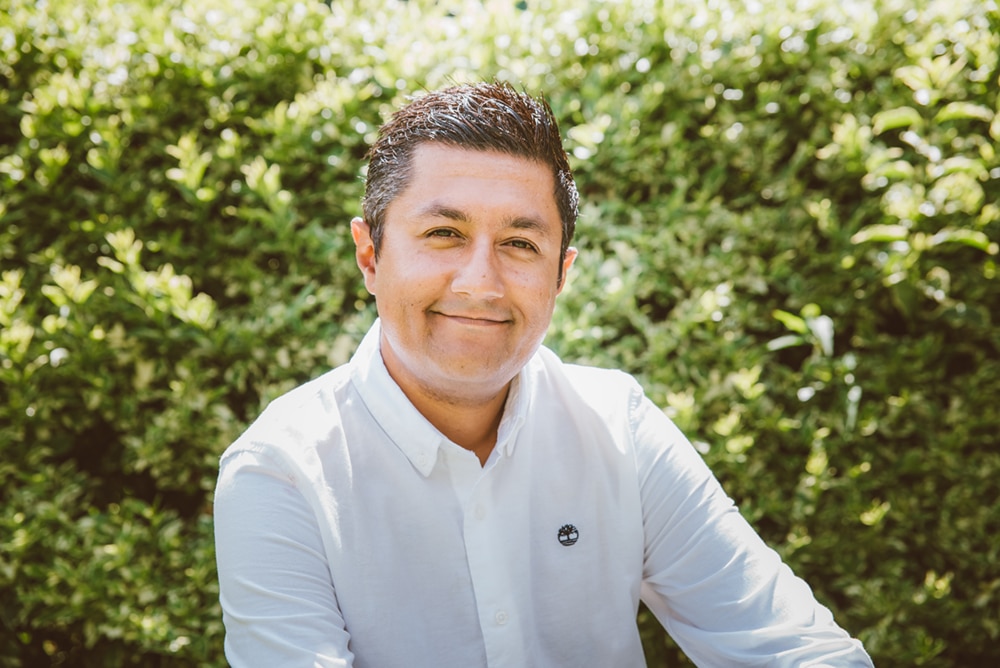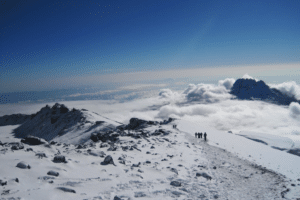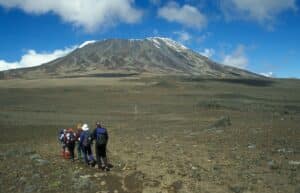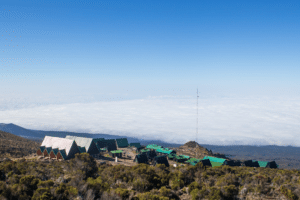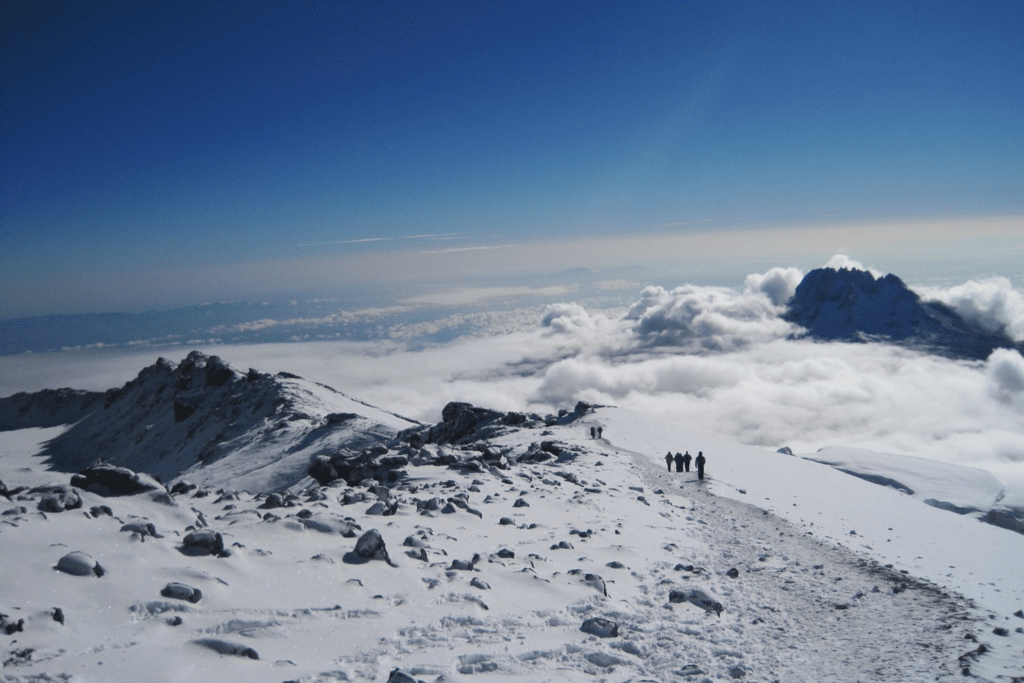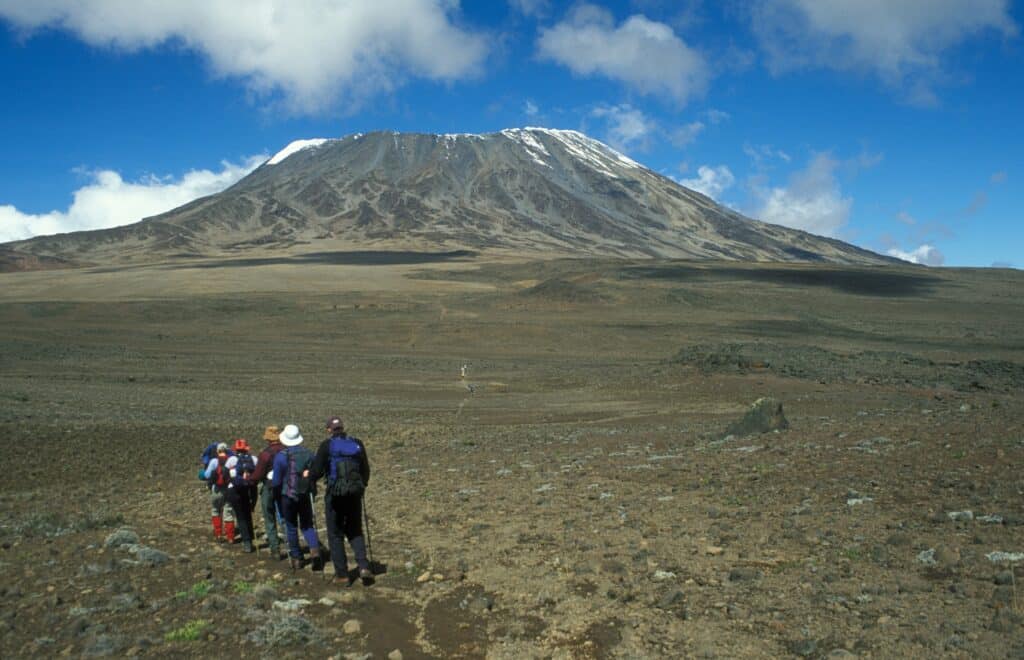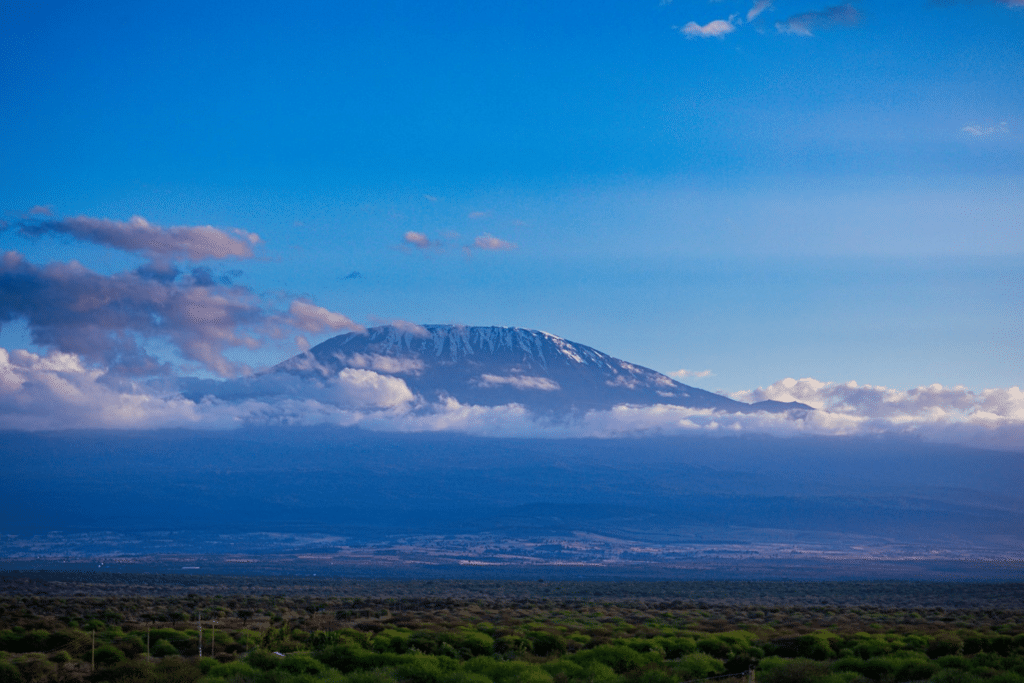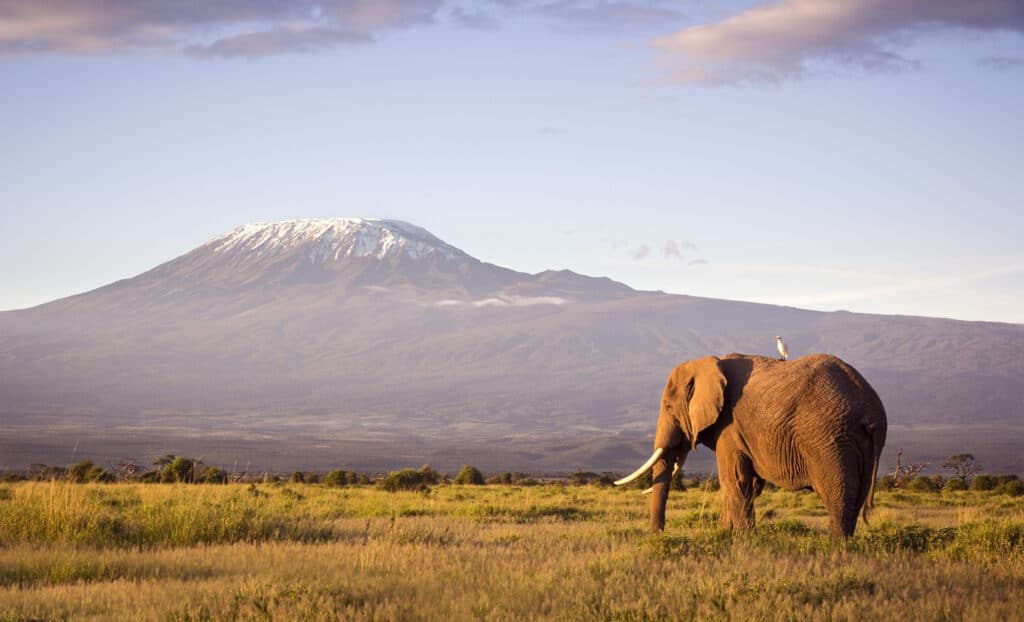Hiking Mount Kilimanjaro isn’t easy—it requires months of training, including a lot of physical exercise. So, this activity isn’t a walk-in-a-park type of thing, and Easy Travel is here to guide you through it!
A boost in your fitness level will ensure a successful summit of Mount Kilimanjaro, so we researched and found incredible ways to boost your stamina. So, without further ado, here are the ten ways to raise your fitness level for your Kilimanjaro adventure.
1. Get the right training to boost your fitness

Proper training is one key to summit success. You’ll need to boost your endurance, which is much needed for your Kilimanjaro climb.
The right type of training involves doing low-intensity exercises for months. This is different from the kind of training you can do on a whim, but a more precise and planned type that will help your body adjust to the various mountain conditions and elevations.
To do this, you can work on building up hiking hours, aiming for 3 hours to 8 hours every week. Regular hikes at increasing hours will aid in developing the muscles you’ll need when you arrive at Kilimanjaro’s base.
Remember not to do this on a flat surface; instead, hike on a nearby mountain or train with others who aspire to climb the highest mountain in Africa.
You can ask a local tour operator if they offer Kilimanjaro climb training preparation. This way, you’ll get the much-needed training and, in turn, have a higher chance of reaching the summit.
However, if you choose to train on your own, make sure to elevate to at least 200 metres—or 1,640 feet—for ascents and descents. Then, go up to 1,000 metres—or 3,280 feet—for ascents and descents. This way, you train your body to acclimate to higher elevations with low oxygen levels.
Note: It is recommended that you do day hikes for long hours at a comfortable pace to acclimatise and get used to being on your feet.
2. Lose weight in a healthy way to be fit

Losing weight is another essential factor to add to your training for your Kilimanjaro hike. However, we recommend healthily doing this.
This means eating healthy foods, doing regular exercises and getting enough sleep. Avoid starving yourself to lose weight, as that will only deteriorate your body and lessen your chances of summit success.
Shedding extra fat and maintaining a healthy body weight will give you an edge. It will provide better speed and greater agility. In addition, you’ll experience better performance due to the lower energy cost your body needs.
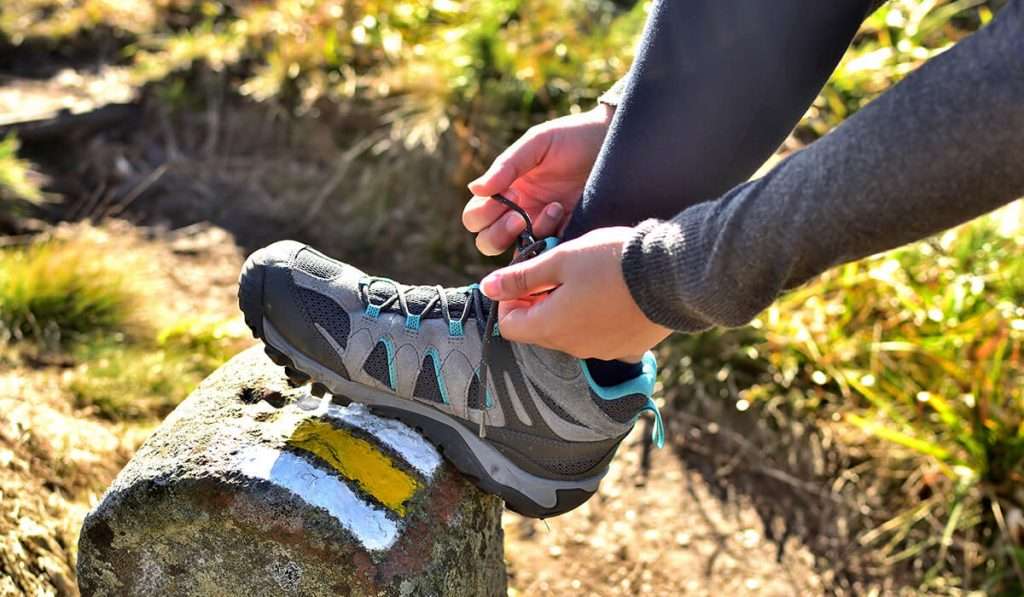
3. Choose lighter shoes to wear on your Kilimanjaro hike
Choosing the right shoes for your Kilimanjaro climb will do you great. They’ll make your trek more comfortable and allow you to move more quickly.
It’s been stated that wearing a pound on your feet equals five pounds on your back. This is part of the ‘5 thumb hiking rules, which the military has proven and tested.
So, choose lighter shoes to save much-needed energy and make your trek as comfortable as possible. This will increase your options of successfully reaching the summit of Kilimanjaro.
4. Minimise the gear you bring for the hike on mount Kilimanjaro

Carrying less is more efficient when hiking. However, most new hikers need to bring more gear for their climb.
This will limit your moves and make it take time to find your desired gear. So, planning and bringing only the gear you’ll need is advisable.
Our porters will also help you carry your gear to each camp, so you only need to bring your snacks, extra clothing, water, and accessories.
5. Bring trekking poles for your mount Kilimanjaro climb
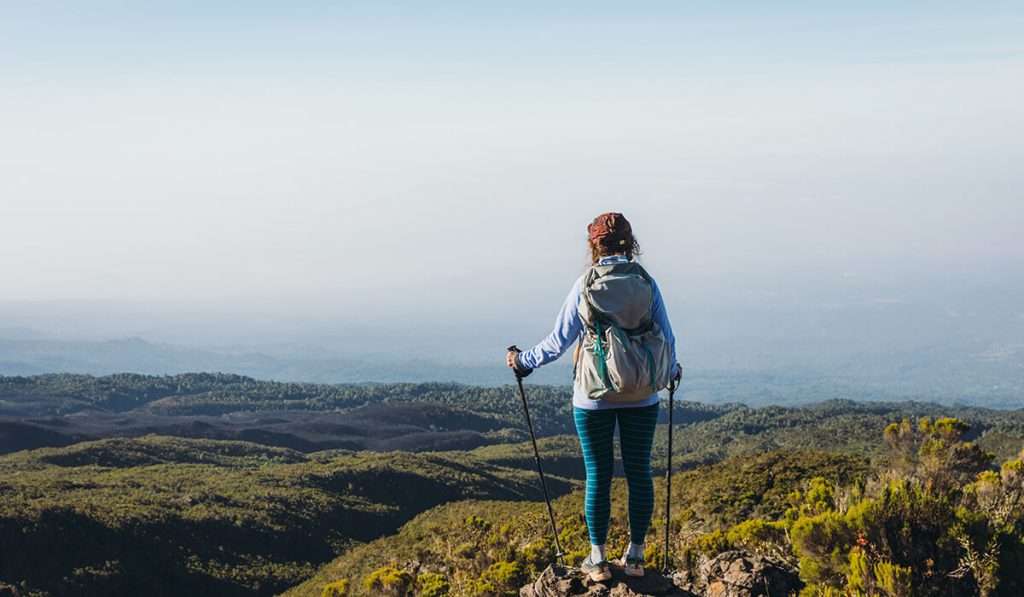
Trekking poles help hikers attain a balanced walk, especially on rough trails and off great knee support during every ascent and descent. As you might already know, walking for long hours can be strenuous on your lower body.
However, with the help of trekking poles, you can transfer some of the weight into your arms, which can make a huge difference, especially if you’re treading steep terrain.
6. Move at a sustainable pace

Moving at a sustainable pace will help you endure all trekking obstacles. Begin with a slow warm-up, then walk at your usual pace.
Avoid moving too quickly, as it will drain your energy quickly and require frequent rest. It’s best to move gradually, then settle on your usual pace to help you walk much longer.
Pacing at a sustainable speed keeps your heart rate in the aerobic zone, enabling you to hike for longer hours. This also improves oxygen transfer to your muscles and increases energy production.
7. Eat the right kinds of foods to boost your fitness

Eating the right kinds of foods will aid you in boosting your fitness level. This is very important as you’ll need to replace the calories you burn with food to keep you going.
Consuming more carbohydrates on your trek is ideal as they convert energy faster than fatty foods and protein. But you don’t have to overthink this, as we serve our clients the right foods for their Kilimanjaro climb.
We ensure our clients get the best experience on their Kilimanjaro trip—including the food they eat.
8. Rehydrate frequently

Rehydrating frequently is necessary, especially if climbing the highest free-standing mountain in the world. As you already know, our body mass is 70% water, which is much needed for our body to function well.
Having the right amount of water in your body helps your muscles to function and lets your body recover more efficiently from strain during the trek. Furthermore, it’s also helpful to use electrolytes to keep your electrolytes balanced as you lose them while sweating.
9. Do aerobic exercises
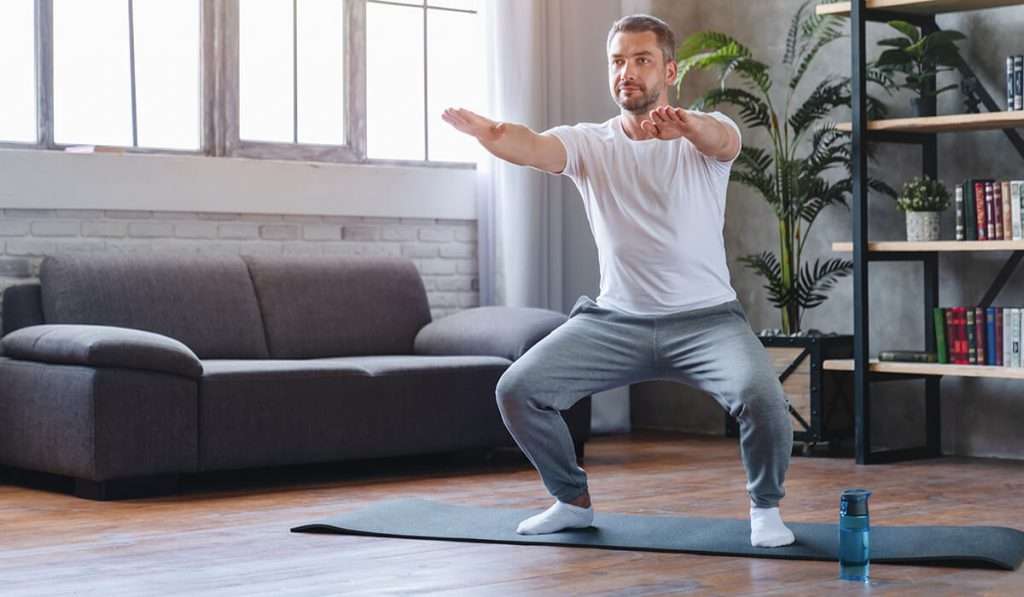
Climbing Kilimanjaro isn’t a walk in the park, though it’s been deemed the easiest summit to climb out of all the Seven Summits. Typically, it’ll require months of aerobic exercise training.
Trail running is one of the best examples of aerobic exercise, as it helps improve cardiovascular endurance and build strength.
10. Keep a positive mindset
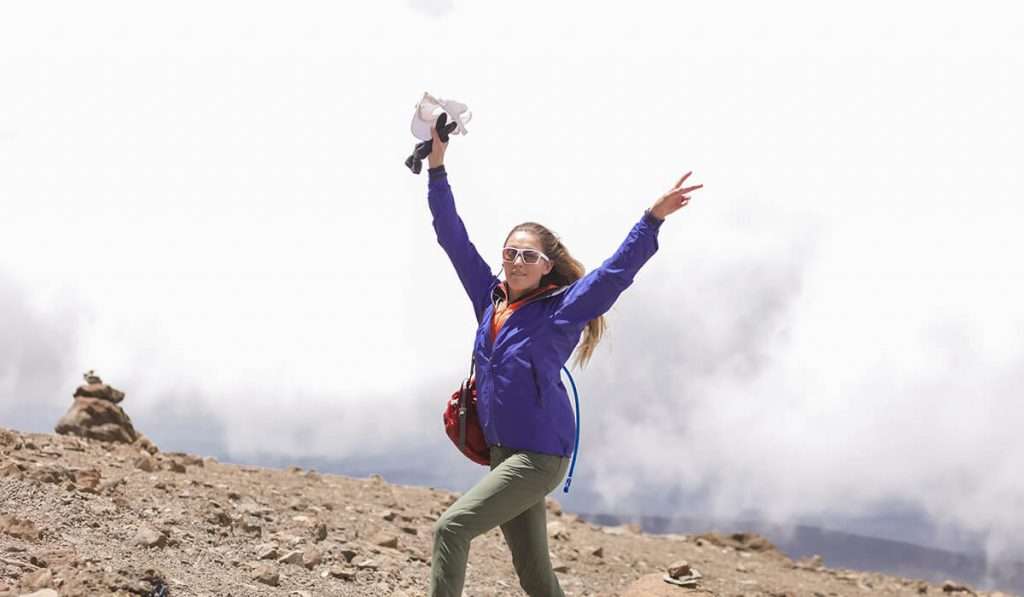
Mount Kilimanjaro is Africa’s highest mountain and one of the world’s Seven Summits, so you’ll likely experience some setbacks and difficulties during your trek.
It can also be challenging as the mountain has five distinct ecological climate zones. This means your body will experience different climates within a day.
The climb gets notably more complex as you reach higher elevations, where mountain sickness is often encountered. It’s a given that it’ll be physically and mentally challenging, so keeping a positive mindset will help you overcome the desire to quit when things get complicated.
What training is required to climb Kilimanjaro?

Kilimanjaro is 19,341 feet or 5,895 metres high. You’ll encounter low oxygen levels at higher elevations, risking mountain sickness (AMS).
If you live in a flat-plain area, you’re at a disadvantage as you’ll have to train harder to acclimatise better to the various mountain conditions.
So, what’s the required training for hiking Mount Kilimanjaro? There are several types of training required if you want to conquer Kilimanjaro, and they are:
Aerobic training
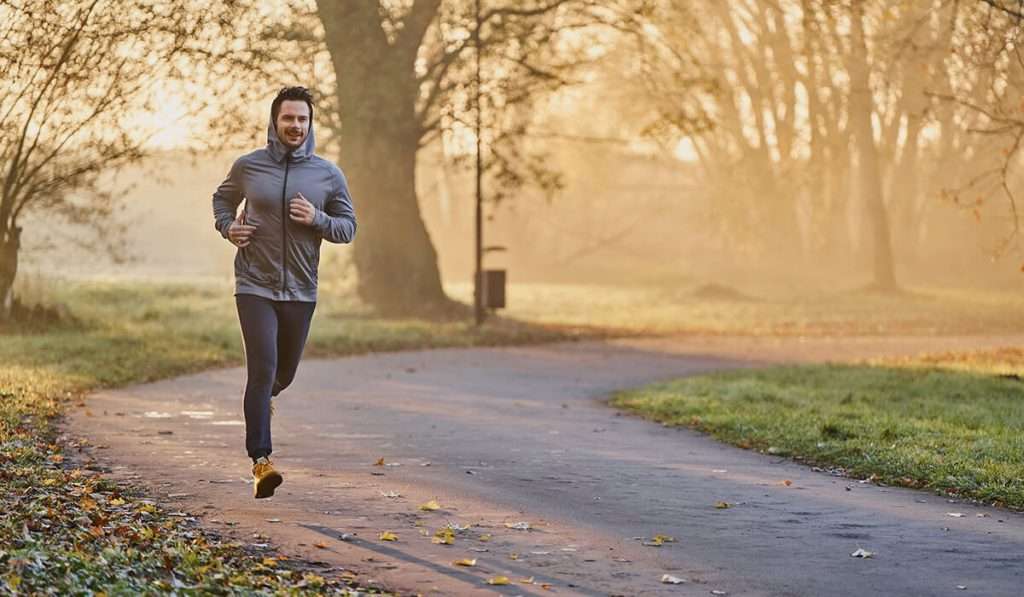
Each aspiring climber needs regular aerobic training to prepare for their Kilimanjaro adventure. This involves cardiovascular exercise:
– jogging
– aerobic dance
– running
– cycling
This is an effective training method for hiking Kilimanjaro since it increases your breathing capabilities. However, cardio isn’t the only exercise you should concentrate on, but its importance shouldn’t be ignored either, as it helps you improve your physical condition.
Strength training

Strength training is equally essential as aerobic training because your strength will be tested significantly during your Kilimanjaro climb. Thus, do some strength training to build the muscle needed for your climb—particularly on your legs.
Set aside time for strength training alone. This will help strengthen your legs, arms, chest, and back. Diverse exercises guarantee the needed strength throughout your body.
Do stretches and warm-ups

Before training, warm up your muscles with light exercises to prevent muscle strains. You can do brisk walking for three to five minutes and then some stretching.
Practice altitude climbing

One of the best ways to ensure summit success is to practice altitude climbing. It would be fortunate if you’re located near high-elevation routes.
You can also book another mountain climb in preparation for your Kilimanjaro hike. Some hikers take Mount Meru in Arusha National Park before climbing the highest mountain in Africa, Mount Kilimanjaro.
They take this as an opportunity to acclimatise and get used to higher elevations, where oxygen is scarce. Mount Meru’s elevation of 4,564 metres makes it a great stepping stone to the Kili climb.
Is training required for Kilimanjaro?
Adequate training is essential before embarking on the Mount Kilimanjaro trek. Regular physical exercise builds stamina, endurance, and strength.
Focus on cardiovascular activities like hiking, running, and strength training exercises targeting key muscle groups. Consistent training will prepare your body for the challenges of Kilimanjaro’s ascent, increasing your chances of a successful and enjoyable climb.
How fit should I be to climb Kilimanjaro
Great news! You don’t have to be extremely fit to climb Kilimanjaro. All that’s required is for your body to get used to the elevation demands of Kilimanjaro. You can do simple exercises like hiking, trail jogging, and strength training.
How long should I train for Kilimanjaro climb
Most trekkers train for 2 to 3 months before officially hiking Mount Kilimanjaro. As stated, the training will include aerobic and strength exercises to help you gain the trekking physique needed to reach the summit.
Getting you there
Climbing Kilimanjaro is an ambitious goal, but it’s easier than you might think with the help of a professional tour company like Easy Travel. Our experienced guides will handle all the logistics and make sure your trip is safe, comfortable, and fun.
We offer a variety of routes and packages to suit any budget, and we can even customise a trip to fit your specific needs. So, if you want to climb Kilimanjaro, Easy Travel is the perfect choice!
Frequently Asked Questions (FAQs)
How do I prepare physically for climbing Mount Kilimanjaro?
Physical preparation for trekking Mount Kilimanjaro entails a balanced cardiovascular and strength training exercise regimen to build endurance and strength. To boost cardiovascular fitness and stamina, engage in hiking, walking, or cycling.
Complement these with strength training routines focusing on the legs, core, and upper body to enhance overall physical conditioning and resilience on the climb. By incorporating both components into your training regimen, you’ll be better equipped to tackle the challenges of Kilimanjaro’s rugged terrain and high altitude.
What muscle groups should I focus on when training for Kilimanjaro?
Preparing for the Mount Kilimanjaro hike necessitates targeted muscle training, focusing on critical areas such as quadriceps, hamstrings, and calves to navigate rugged terrain effectively. Strengthening the glutes and core muscles enhances stability and balance, which are essential for keeping proper form throughout the ascent.
By integrating exercises that target these muscle groups into their training regimen, hikers can improve their overall strength and endurance, enhancing their readiness for the climb’s challenges. Engaging in regular training sessions that target these muscle groups will not only increase your physical readiness but also boost your confidence and enjoyment during the climb.
How can I prevent altitude sickness while climbing Mount Kilimanjaro?
To avoid altitude sickness while hiking Kilimanjaro, it’s vital to acclimate gradually to the high altitude by ascending slowly. Give your body sufficient time to adapt to the reduced oxygen levels.
Keep yourself hydrated, adhere to a well-balanced diet with ample carbohydrates and electrolytes, and follow any altitude medication your healthcare provider prescribes. Pay close attention to your body’s cues and be vigilant for symptoms of altitude sickness like headaches, nausea, or dizziness.
If you experience any symptoms, communicate promptly with your guide or group leader to make sure appropriate action is taken.
What training sessions should I incorporate into my fitness regimen for Kilimanjaro?
Your training regimen for climbing Mount Kilimanjaro should include a blend of aerobic exercises, strength training, and low-intensity workouts. Aerobic exercises like hiking, running, or cycling improve cardiovascular endurance, while strength training enhances muscle strength and endurance. Low-intensity exercises like yoga or Pilates can improve flexibility and balance, which is essential for navigating the rugged terrain of Kilimanjaro.
How can I ensure a successful climb to Uhuru Peak on Mount Kilimanjaro?
To ensure a successful climb to Uhuru Peak, the tallest mountain in Africa, it’s crucial to be in excellent physical shape and adequately prepared for the challenges of high altitude and rugged terrain. Follow a comprehensive training plan, acclimatise properly, stay hydrated, and always listen to your body’s signals during the ascent. Choose a trusted tour operator with experienced guides to maximise your chances of a successful summit.
What role does altitude play in hiking Mount Kilimanjaro?
Ascending Mount Kilimanjaro involves facing the challenges associated with high altitude, including reduced oxygen levels and altitude sickness symptoms like nausea and headaches. To mitigate these risks, climbers should acclimate slowly, stay hydrated, and identify the signs of altitude sickness. By taking these precautions and listening to their bodies, hikers can increase their chances of a safe and successful ascent to Kilimanjaro’s summit.
How does the body adapt to high altitude during a Kilimanjaro hike?
As you ascend Mount Kilimanjaro, your body adapts to the diminishing oxygen levels at higher altitudes. It boosts red blood cell production to enhance oxygen transportation and increases your breathing rate to compensate for the decreased oxygen availability.
Additionally, improved circulation ensures vital organs receive an adequate oxygen supply amidst the altitude changes. These physiological adjustments enable climbers to endure the challenges of high-altitude trekking and achieve their summit goals.
What kind of terrain can I expect while climbing Mount Kilimanjaro?
Mount Kilimanjaro offers a variety of landscapes, from verdant rainforests to icy glaciers, making each step of the climb an adventure. As you ascend, you’ll encounter rocky trails, loose scree, and challenging snow-covered slopes, demanding a mix of agility and endurance.
To conquer these diverse terrains, hikers must be prepared physically and mentally for the ever-changing conditions. Each stretch of terrain presents its challenges and rewards, ensuring an unforgettable journey to Kilimanjaro’s summit.
How can I improve energy production when hiking Mount Kilimanjaro?
To enhance energy production for climbing Mount Kilimanjaro, focus on ingesting a balanced diet that is rich in carbohydrates, proteins, and healthy fats. Carbohydrates provide the primary energy source for endurance activities, while proteins support muscle repair and recovery. Additionally, stay hydrated and consume snacks high in carbohydrates and electrolytes during the hike to maintain energy levels.
What precautions should I take when training for a Kilimanjaro hike?
When training for a Mount Kilimanjaro hike, listening to your body and avoiding overexertion is necessary. Slowly increase the intensity and your workout duration to prevent injuries and fatigue.
Consider any signs of strain or discomfort and consult a fitness professional if needed. Additionally, choose appropriate footwear and clothing for training sessions to ensure comfort and safety.














